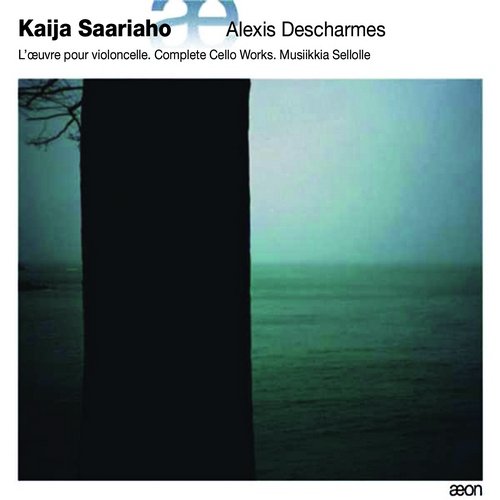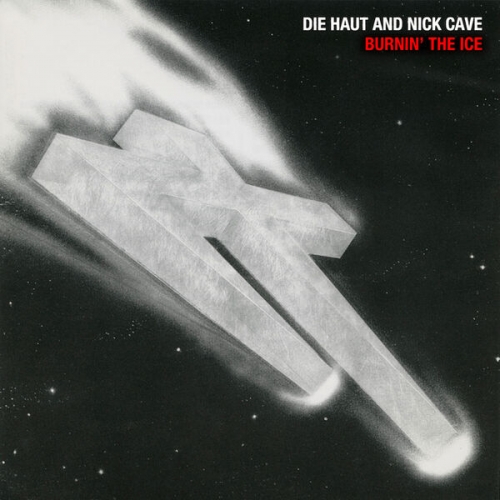Alexis Descharmes - Kaija Saariaho: Complete Cello Works (2006)

Artist: Alexis Descharmes
Title: Kaija Saariaho: Complete Cello Works
Year Of Release: 2006
Label: Aeon
Genre: Classical
Quality: FLAC (image+.cue,log)
Total Time: 56:11
Total Size: 242 mb
WebSite: Album Preview
Tracklist: Title: Kaija Saariaho: Complete Cello Works
Year Of Release: 2006
Label: Aeon
Genre: Classical
Quality: FLAC (image+.cue,log)
Total Time: 56:11
Total Size: 242 mb
WebSite: Album Preview
01. Petals (1988), for cello and live electronics [10:42]
02. Oi Kuu (1990), for bass clarinet and cello [06:23]
03. Spins and Spells (1997), for cello [05:41]
04. Mirrors (1997), for flute and cello [03:11]
05-11. Sept Papillons (2000), for cello [11:09]
12-14. Près: I-II-III (1992), for cello and live electronics [19:02]
Performers:
Alexis Descharmes, cello
Jérémie Fèvre, flute
Nicolas Baldeyrou, bass clarinet
The music of Finnish avant-garde composer Kaija Saariaho has been steadily gaining repute since 2000, when her opera L'amour de loin was premiered in Salzburg. Placing the label of avant-garde on her music, though, is perhaps a mistake: Saariaho has mingled in a wide circle of artistic talent, including Boulez's IRCAM as well as alongside spectralist composers, giving her music, regardless of nomenclature, an entirely distinct and original voice. What better instrument to realize her works, then, but the cello -- often described as the closest in timbre to the human voice.
This album contains Saariaho's complete cello works. Featuring the French-born, Paris Conservatory-educated Alexis Descharmes, this album is a good showcase for his creative and musical talent, and he proves himself skilled with the handling of Saariaho's diverse, eclectic palette. Awash in a filter of glowing, silvery monochrome, Saariaho's music has something for everyone. With the exception of the final work, the first five works featured on this album proceed in chronological order, beginning with Petals (1988). Often growling and sometimes crass, Descharmes succeeds in finessing the great control needed for Saariaho's wide variation of bowing styles. Electronics, while optional, broaden the work's depth tastefully and unobtrusively. Descharmes is joined by clarinetist Nicolas Baldeyrou for a performance of Oi Kuu, written two years later for bass clarinet and cello. A more playful, spirited work, it is nevertheless plagued by a pervading, eerie quality throughout. Slowly gradated pitch shifts, tenuously realized by the soloists, add to the feeling of unease. The colorful Spins and Spells utilizes a unique scordatura (retuning of the open strings) of B flat, G, C sharp, and A. This wobbly work eventually evolves into a gruff, repetitive theme that is calculated with Saariaho's typical musical care. Mirrors (1977) is a duet for cello and flute; Jérémie Fèvre handles Saariaho's numerous instructions and styles (especially the fluttertonguing) with panache, complementing Descharmes beautifully. Sept Papillons (Seven Butterflies), while not a wholly original idea as the liner notes suggest (Saariaho was in fact preceded by a number of composers including Schumann and Fauré), it contains some evocative tonal portraits. Often utilizing the cello open strings, there is a humming, nervous, tenacious quality about these with which neither Fauré nor Schumann are blessed. Butterfly No. 7 stands out for its somber, whining quality, while No. 8 cleverly alludes to the Prelude of the Bach First Cello Suite.
Près ("Near") is perhaps the most effective work overall on this album. This ghostly creation, completed in 1992, refers to Près de la mer, an equally vivid and haunting painting by Gaugin. Like Petals, Près is augmented with electronics. Cast in three movements, the screeching, grinding, and groaning bow of Descharmes will tear your heart out, and the imaginative electronics suggesting high-pitched bells and a chorus are equally chilling. The second movement lightens somewhat and is more percussive, leading into the third, which races with pixilated, electronic rain-tree figures.
The sound quality is exceptionally vivid, dynamic, and responsive, and gives Saariaho's musically evocative works a great canvas. If you have yet to hear her work, or are new to music's more eclectic realm, this disc -- while a good introduction -- will certainly leave you hungry for more of her repertoire in other genres.
This album contains Saariaho's complete cello works. Featuring the French-born, Paris Conservatory-educated Alexis Descharmes, this album is a good showcase for his creative and musical talent, and he proves himself skilled with the handling of Saariaho's diverse, eclectic palette. Awash in a filter of glowing, silvery monochrome, Saariaho's music has something for everyone. With the exception of the final work, the first five works featured on this album proceed in chronological order, beginning with Petals (1988). Often growling and sometimes crass, Descharmes succeeds in finessing the great control needed for Saariaho's wide variation of bowing styles. Electronics, while optional, broaden the work's depth tastefully and unobtrusively. Descharmes is joined by clarinetist Nicolas Baldeyrou for a performance of Oi Kuu, written two years later for bass clarinet and cello. A more playful, spirited work, it is nevertheless plagued by a pervading, eerie quality throughout. Slowly gradated pitch shifts, tenuously realized by the soloists, add to the feeling of unease. The colorful Spins and Spells utilizes a unique scordatura (retuning of the open strings) of B flat, G, C sharp, and A. This wobbly work eventually evolves into a gruff, repetitive theme that is calculated with Saariaho's typical musical care. Mirrors (1977) is a duet for cello and flute; Jérémie Fèvre handles Saariaho's numerous instructions and styles (especially the fluttertonguing) with panache, complementing Descharmes beautifully. Sept Papillons (Seven Butterflies), while not a wholly original idea as the liner notes suggest (Saariaho was in fact preceded by a number of composers including Schumann and Fauré), it contains some evocative tonal portraits. Often utilizing the cello open strings, there is a humming, nervous, tenacious quality about these with which neither Fauré nor Schumann are blessed. Butterfly No. 7 stands out for its somber, whining quality, while No. 8 cleverly alludes to the Prelude of the Bach First Cello Suite.
Près ("Near") is perhaps the most effective work overall on this album. This ghostly creation, completed in 1992, refers to Près de la mer, an equally vivid and haunting painting by Gaugin. Like Petals, Près is augmented with electronics. Cast in three movements, the screeching, grinding, and groaning bow of Descharmes will tear your heart out, and the imaginative electronics suggesting high-pitched bells and a chorus are equally chilling. The second movement lightens somewhat and is more percussive, leading into the third, which races with pixilated, electronic rain-tree figures.
The sound quality is exceptionally vivid, dynamic, and responsive, and gives Saariaho's musically evocative works a great canvas. If you have yet to hear her work, or are new to music's more eclectic realm, this disc -- while a good introduction -- will certainly leave you hungry for more of her repertoire in other genres.


![Richard Carr, Czech National Symphony Orchestra, Vladimir Martinka - Richard Carr: The Leap (2025) [Hi-Res] Richard Carr, Czech National Symphony Orchestra, Vladimir Martinka - Richard Carr: The Leap (2025) [Hi-Res]](https://img.israbox.com/img/2025-12/22/0ruhq82oeu9h4oypzf8u61qbv.jpg)





